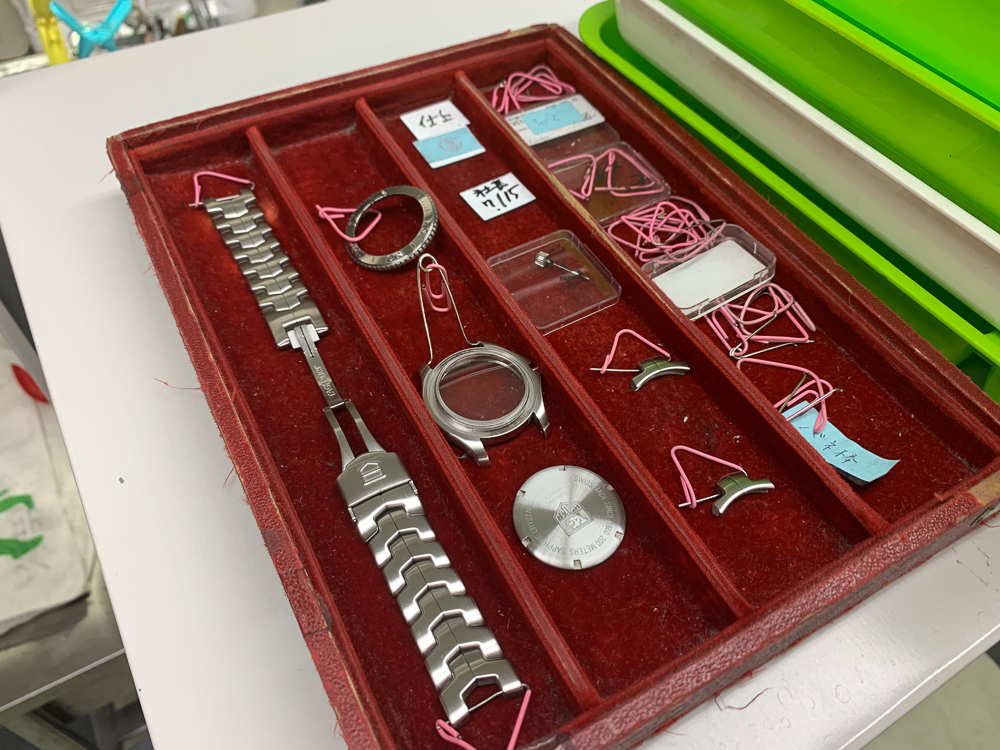Japan for many years has been a powerful watch buying market. The level of knowledge in Japan is profound and often the Japanese journalists, and subsequently, collectors delve more deeply into the technical aspects of watchmaking than in many other markets.
The considerable volume of watches entering Japan results in the need for aftersales service facilities capable of dealing with this demand. Many large brands will have their own dedicated workshops. Below we visited Japans largest independent facility Kyoei, founded in 1968, who deal with 100,000 repairs yearly, roughly 300 watches per day. These repairs range from changing batteries and straps through to repairing tourbillons and minute repeaters. In total, Kyoei employs 170 people, including 50 watchmakers and technicians. The company developed its own software to be able to manage the complexity, diversity and quantity of repairs made inside the company.
Below are images of the operation, what is shown, is only a brief and superficial insight into a company that has built its competence, organisation and reputation over the last 50 years. The company developed its own logistics software to be able to manage the complexity of repairs made inside the company.
Reception
The majority of the watches are received by post and unpacked here, although there are multiple drop off centers for clients to hand over their watches physically including -Isetan-. All of the original packaging the watches are received in is kept for a defined period following the reception of the watches.
Logistics
Logistics
A team of 6 people entering all of the details of each watch into the company system. Every watch regardless of value or complexity is entered into the system, describing the watch, request and any additional details such as requested deadlines.
The Quick Repairs Department
For changing batteries and straps. Prior to changing batteries, the watches are tested to see if they remain water resistant. If they are, the watch continues to have its battery replaced, if the watch fails to be resistant the client is informed and if they wish to continue a new price is given which includes the cost of changing seals.
The Estimation Department
Consisting of 8 people. This department checks the watches and generates a small report including a calculation as to how much the watch will cost to service/repair.
Ordering Components
Once the estimate is accepted by the client this department with a team of 6 people will order the required components for the watches, ranging from movement parts through to bracelets.
Refurbishing Cases
A separate workshop from the watchmakers, dismantles the cases, refurbishes, polishing and re-graining the cases of the watches. Then cleans in ultrasonic baths the pieces to remove any polishing compounds as well as the accumulated residue from the clients.
The Main Workshop
Split into two sections, left-quartz, right-mechanical. Within this work shop virtually any watch can be repaired. The level of diverse knowledge of product is extraordinary, providing Kyoei can access components from the manufacturer, or no parts are required in the service operation of a watch, they accept any product. These include tourbillons and repeaters, mainstream and independent brands. All brands serviced remain confidential but we observed some of the most complex, high quality and difficult watches to be made being serviced.
The two watchmakers below are amongst the most experienced in the company and are responsible for the most complicated and difficult repairs.
Once the watches are repaired and ready to return to the client the shipping department packages and ships the watches to their owners all over Japan.
The nature of watchmaking is the constant evolution of product. Although the mainstream products remain similar, there are many variations and new technologies adopted by brands resulting in considerable innovation. Kyoei is interesting because of their ability to adapt to virtually any product and provide an efficient and competent service to its multitude of clients.
Masahiro Kobayashi is the President, and Hidehito Akita, the principle director of Kyoei.
To learn more about Kyoei














